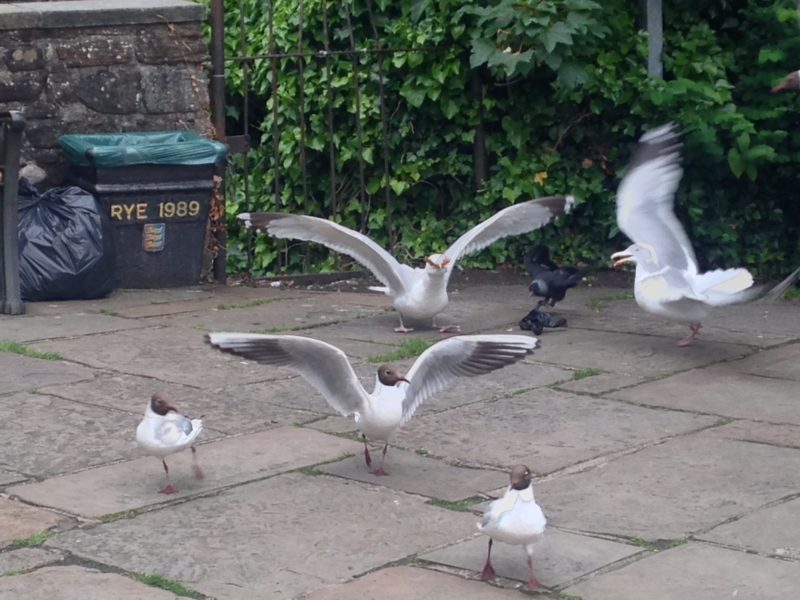
Love them or hate them, herring gulls are here to stay in our south coast seaside towns, the Friends of Rye Harbour nature Reserve were told last Saturday February 17. Richard Thompson, Wildlife Rehabilitation Officer at the RSPCA’s Mallydams Wood Rescue Centre made the case for and against, whether these birds should be viewed as the iconic noise of the seaside or as an unwanted menace to day trippers and residents.
They are certainly noisy with their shrill cries at 110 decibels as they defend their territory and their young. They are messy too and they do seek food aggressively particularly in fast-food tourist areas where they are actively fed and encouraged by litter-dropping humans.
They are a protected wildlife species on the Red List, since numbers have been declining over the past 50 years. Local councils do not allow culling, except in proven-need cases. Control mechanisms such as netting, installing gull guards, the use of birds of prey, real or man-made, are mostly ineffective, and can result in animal cruelty.
Mallydams in Peter James Lane, Fairlight, is one of the few wildlife rescue and rehabilitation centres in the UK. Opened by the RSPCA in 1962, it has 55 acres of woodland and is open for visitors and admissions 24/7, every day of the year. It receives 3,000 casualties each year, ranging from dormice to grey seals, and deer. In 2017 there were 1,000 gull admissions, with peak times in June and July, when young fledglings fall off roofs of buildings. Causes of admission include accidental injury, natural poisoning from ingesting toxins causing botulism and paralysis from feeding on landfill sites, and being trapped in fishing net litter. Deliberate cruelty by humans however is a frequent occurrence; every adult bird gets x-rayed on reception at the centre and 50% show an airgun pellet lodged in their bodies.
They are given the very best care to encourage recovery to health and normal functioning in accordance with standards laid down by the Wildlife Rehabilitation Council. This is necessarily a testing standard for survival and humane euthanasia is often unavoidable. Only around 50% are released back into the wild. In a study led by Peter Rock of the British Trust for Ornithology, ringed herring gulls have been tracked to widespread destinations across Europe where the rehabilitated gulls continue to flourish. Their average life is 15 years but they can live to 25 or more.
A straw poll at the end of the meeting found a great majority of seagull fans in the audience, perhaps not surprisingly in this gathering of friends of wildlife.
Photos: Seana Lanigan and Kenneth Bird
Image Credits: Seana Lanigan .



